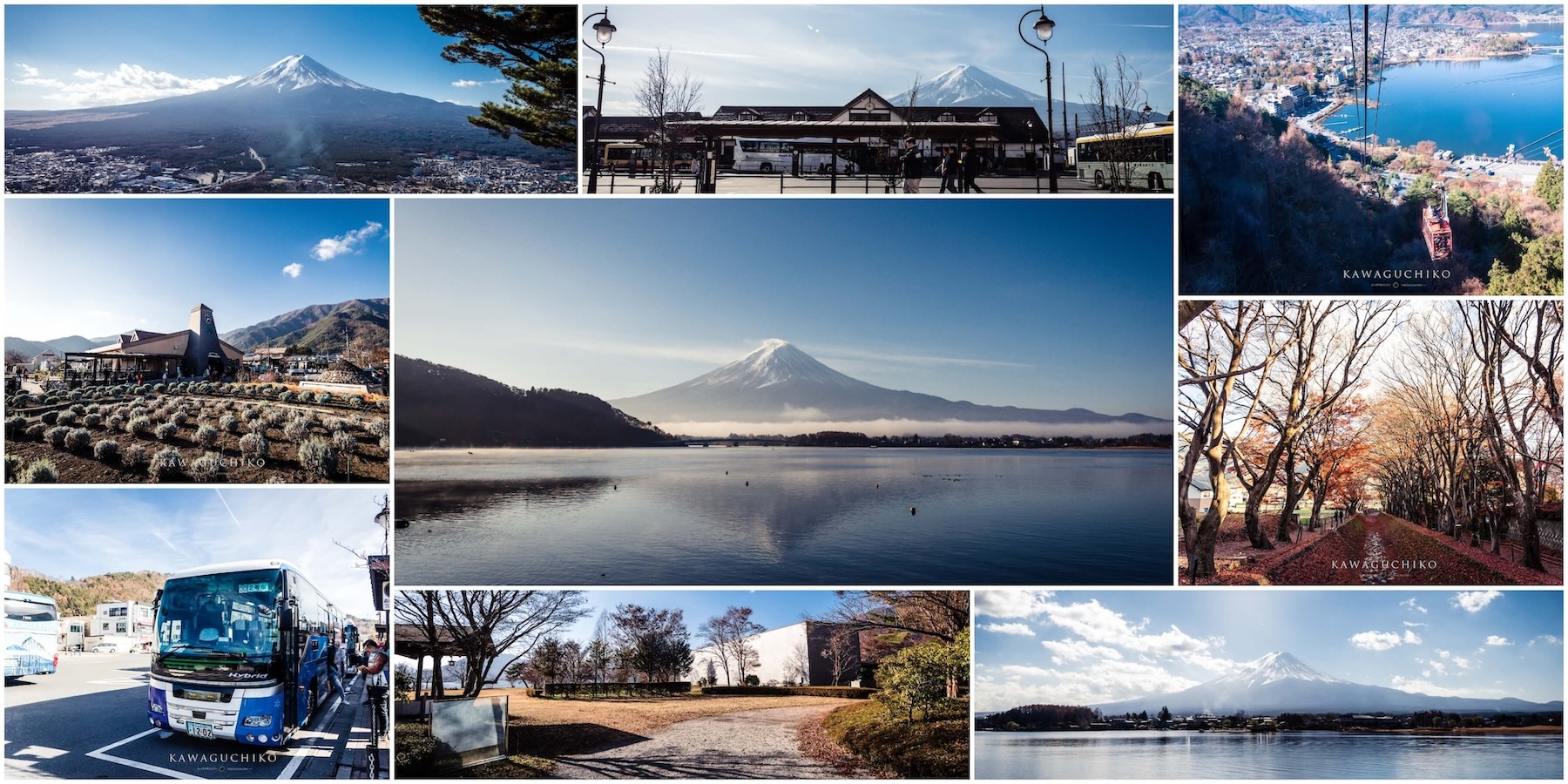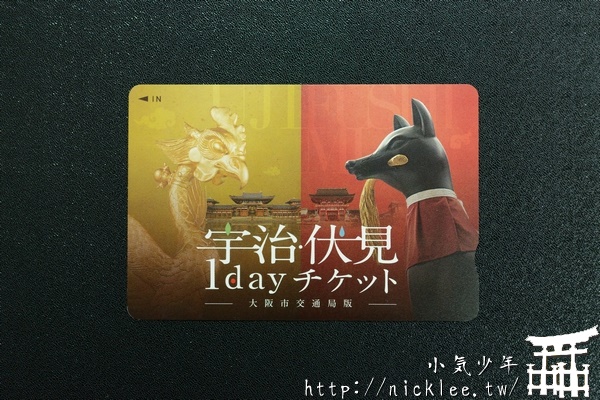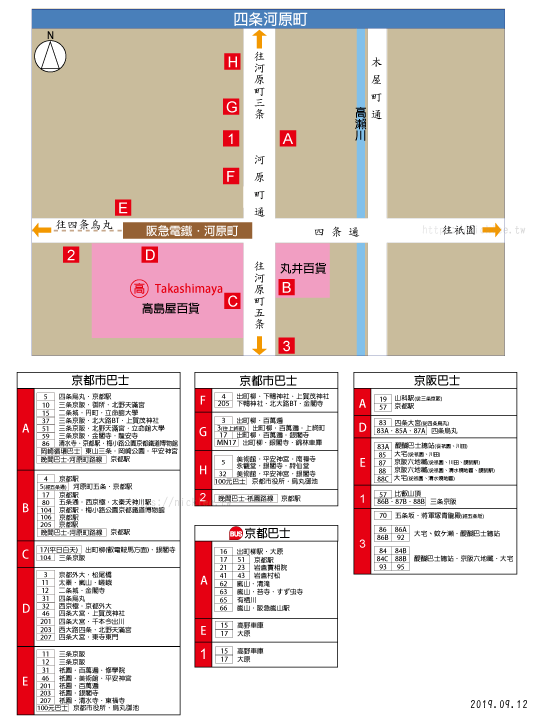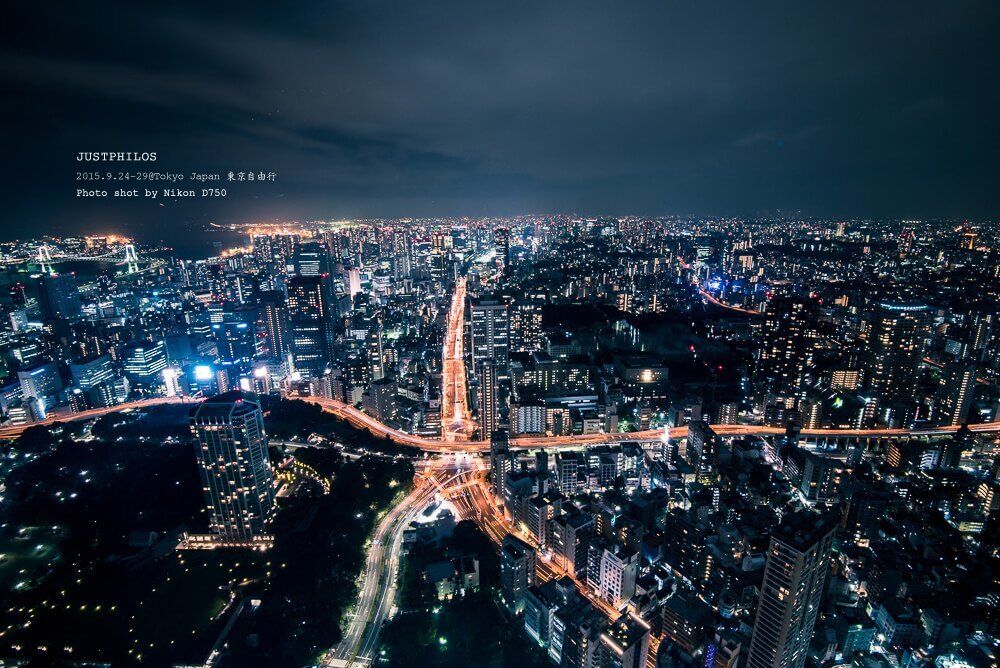When visiting Tokyo, if you want to pay homage to Mount Fuji up close, you must arrange a trip to Lake Kawaguchi! Refer to this article, Philos will provide you with itinerary suggestions for planning a free trip to Lake Kawaguchi, as well as how to get to Lake Kawaguchi from downtown Tokyo, and how to use Lake Kawaguchi package tickets.
Philos’s Travel Notes
Mount Fuji Lake Kawaguchi is about a 2-hour drive from downtown Tokyo, plus Lake Kawaguchi is vast,strongly recommend arranging at least a two-day and one-night itinerary, so you can tour Lake Kawaguchi at a more comfortable pace! In addition, Lake Kawaguchi is mainly surrounded by Mount Fuji and Lake Kawaguchi. It is recommended to prepare a “super wide-angle lens” for the camera, which can better capture the grandeur of Lake Kawaguchi.
♨ Suggested stay time: Two days and one night.
How long to plan for Lake Kawaguchi
Lake Kawaguchi has many attractions, it is recommended to arrange at least one full day; if you add nearby attractions such as Fujiyoshida or Oshino Hakkai, then two days and one night or more is more appropriate.
Recommended accommodation in Lake Kawaguchi
If you want to shoot Reverse Fuji, you must stay in Lake Kawaguchi for one night! It is recommended to find a guesthouse closer to the lake (after all, the temperature is very low in the early morning, and motivation is needed to get up early), which will be more convenient to the shooting point.
Introduction and location of Lake Kawaguchi
First, let’s explain the geographical location of Lake Kawaguchi. Lake Kawaguchi is located in Fujikawaguchiko Town, Yamanashi Prefecture, about a 2-hour drive from downtown Tokyo. It is collectively referred to as “Fuji Five Lakes” with Lake Yamanaka, Lake Sai, Lake Motosu, and Lake Shoji. Among them, Lake Kawaguchi and Lake Sai are popular spots for close-up views and photography of Mount Fuji.
In addition to the close-up view of Mount Fuji, including Tenjoyama, Kawaguchiko Museum of Art, Maples Corridor… and other beautiful surrounding attractions, as well as the convenience of transportation, this has made Lake Kawaguchi the first choice for tourists to visit the Fuji Five Lakes.

Lake Kawaguchi is a place where you can view Mount Fuji up close.
Lake Kawaguchi attractions map
The attractions of Lake Kawaguchi are mainly around the lake, suitable for arranging a one-day or two-day tour of Lake Kawaguchi.
Below, Philos has specially organized a map of Lake Kawaguchi’s attractions, plus the nearby Fujiyoshida and Shinkura Fuji Asama Shrine, to give friends who want to go to Lake Kawaguchi a relative position and distance concept of the surrounding attractions of Lake Kawaguchi before planning the itinerary, which will be more convenient for arranging the itinerary, and refer to the 10 Lake Kawaguchi attractions introduced later.

Lake Kawaguchi one-day tour attractions map.
How to get to Lake Kawaguchi from downtown Tokyo
In addition to driving by yourself, taking public transportation from downtown Tokyo to Lake Kawaguchi is probably the most convenient, fast, and money-saving way. The main ways to get to Lake Kawaguchi are by “high-speed bus” or “train”, as explained below.
How to get to Lake Kawaguchi by train
The main railway connection from Kawaguchiko Station is the “Fujikyuko Line”. From downtown Tokyo, take the JR to “Otsuki” station, then transfer to the Fujikyuko Line to Kawaguchiko.
Although there are direct JR trains to Kawaguchiko from Narita Airport, Haneda Airport, or Tokyo Station, these are only available on Fridays, weekends, and specific holidays. From the simplified transportation map below, if you choose to stay in downtown Tokyo, you can select a station where the “Yamanote Line” stops and it’s quite convenient to go to Shinjuku or other places to transfer to the JR train to Kawaguchiko.
Currently, the fastest way to get to Kawaguchiko by train is to take the “Fuji Excursion” train, which only has three services a day and takes less than two hours to get directly from Shinjuku to Kawaguchiko Station. Detailed information and schedules can be found on the JR official website’s Fuji Excursion page.

Here is a simplified transportation map from Tokyo to Kawaguchiko.
How to get to Kawaguchiko by bus
The most direct and simple way to get to Kawaguchiko, I would recommend, is to take a highway bus from downtown Tokyo. From Shinjuku, Ikebukuro, Tokyo Station and other areas, there are buses to Kawaguchiko every day, and the detailed route can be referred to the Fujikyu Bus website.
You must reserve a seat on the highway bus in advance and if you choose to go to Kawaguchiko on weekends or holidays, it is recommended to book round-trip bus tickets online in advance, as it is very likely that the bus will be full. To reserve a Kawaguchiko highway bus, you can go to the Japan Highway Bus website to make a reservation. (The website has a Chinese version, just follow the website process to complete the reservation smoothly)

Taking the highway bus to Kawaguchiko is the fastest and most direct way.
Based on my own experience of going to Kawaguchiko, I chose to take the highway bus from Shinjuku to Kawaguchiko. From JR Shinjuku Station “South Exit”, cross the road to reach Shinjuku Highway Bus Station, and the bus boarding location is on the third floor of the Highway Bus Station (バスタ新宿). Before boarding, just show the reserved paper or electronic ticket to the station staff. However, please note that JR may occasionally be delayed during peak hours, so it is recommended to leave enough time to avoid missing the bus.
Kawaguchiko Discount Package – Kawaguchiko・Saiko・Motosuko area 2DAYPASS
If you are not driving to Kawaguchiko, most tourists choose to take the Kawaguchiko Sightseeing Bus for transportation between Kawaguchiko attractions (you can also choose to charter a car or take a local taxi).
The Kawaguchiko Sightseeing Bus (Red Line) departs from Kawaguchiko Station and ends at Kawaguchiko Natural Living Center, with a frequency of about 15-20 minutes. Although the frequency seems quite dense, it is still possible to not be able to board the bus on holidays ; therefore, it is recommended to be flexible in your itinerary, or try to concentrate your sightseeing spots to reduce waiting time.

Kawaguchiko Sightseeing Bus Map. (For a larger map and picture source, please click here )
The fare for each ride on the Kawaguchiko Sightseeing Bus ranges from 150 to 480 yen (depending on the distance traveled). The discount package for the Kawaguchiko・Saiko・Motosuko area 2DAYPASS is 1,500 yen, which allows unlimited rides on all areas of the sightseeing bus (including red, green, and blue lines) within two days. If you choose to take the sightseeing bus, be sure to buy the sightseeing bus package, it’s much more cost-effective!
If you need to purchase a sightseeing bus package, you can buy it at the “Tourist Bus Ticket Counter” inside or outside Kawaguchiko Station (only open before noon). For the schedule, you can also check the timetable of the Kawaguchiko Sightseeing Bus 。
| Ticket Type | Riding Range | Price | Remarks |
|---|---|---|---|
| Sightseeing Bus Ticket | Can ride all areas of the Red, Green, and Blue Sightseeing Bus. | Adult 1,500 yen Child 750 yen |
Valid for 2 days |
| R Discount Coupon | Cable Car (Round Trip) + Sightseeing Boat (One Way) + All Sightseeing Bus Areas. | Adult 2,600 yen Child 1,300 yen |
Valid for 2 days |
| V Discount Coupon | Cable Car (Round Trip) + Sightseeing Boat (One Way) | Adult 1,400 yen Child 700 yen |
As for which type of discount ticket to choose? I suggests that you can decide based on your itinerary. If you plan a two-day tour of Lake Kawaguchi, choosing a discount ticket that includes a round-trip bus, cable car, and sightseeing boat should be quite suitable. (Although I only arranged a one-day tour this time, I still chose the R discount ticket for my first visit to Lake Kawaguchi to experience different views of the lake.)
For those who do not want to arrange their own itinerary, you can also join the package tours offered by travel agencies. The itinerary is quite good, and you don’t have to worry about local transportation.
Recommended Lake Kawaguchi 8 Lake Scenic Spot Itinerary
The Lake Kawaguchi Sightseeing Bus (Red Line) mainly runs from the east bank to the north bank of Lake Kawaguchi, which is also the main sightseeing route of Lake Kawaguchi. You can easily enjoy a day tour of Lake Kawaguchi by taking the bus. You can plan and arrange your itinerary with the above Lake Kawaguchi one-day tour sightseeing map.
Kawaguchiko Station
Kawaguchiko Station is the first gateway to welcome visitors to Lake Kawaguchi. Whether you take a bus or train to Lake Kawaguchi, or transfer to a sightseeing bus from here, it all happens at Kawaguchiko Station. The exterior of Kawaguchiko Station is designed with simple Japanese architecture. On a clear day, you can see Mount Fuji from Kawaguchiko Station! It is also one of the best spots officially recommended for viewing Mount Fuji.
Kawaguchiko Station
Opening hours: Open 24 hours
Admission: Free
Transportation: Take the JR Fujikyuko Line or Fuji Excursion, or take the Fuji Express Bus

Kawaguchiko Station is one of the best spots officially recommended for viewing Mount Fuji.
Tenjoyama Park
Tenjoyama Park is also one of the must-visit spots when you come to Lake Kawaguchi. In addition to taking the Mount Fuji Panoramic Ropeway (~河口湖~ 富士山パノラマロープウェイ) to overlook the scenery of Lake Kawaguchi from the sky, you can also enjoy the excellent view of Mount Fuji from a vast perspective. Other features such as the Tenjo Bell, Usagi Jinja (Rabbit Shrine), and Kachigachiyama …etc are also one of the unique attractions of Tenjoyama.
Tenjo-yama Park
Opening hours: 09:00 – 17:00 (March-November); 09:30 – 16:30 (December-February)
Admission: Adults ¥900; Children ¥450
Transportation: Take the sightseeing bus to the “Sightseeing Boat • Mountain Ropeway Entrance Station” (遊覧船・ロープウェイ入口), then walk to the cable car entrance

You can enjoy an unobstructed view of Mount Fuji from Tenjoyama Park.

Taking the Tenjoyama Ropeway allows you to overlook the entire Lake Kawaguchi from a high place.

The legend of Kachigachiyama in Mount Fuji Tenjoyama.
Lake Kawaguchi Sightseeing Boat
Taking the Lake Kawaguchi sightseeing steamboat “Appare” is another way to view Mount Fuji! The route of the Lake Kawaguchi sightseeing boat is very good, the boat tour takes about 20 to 30 minutes, starting from the “Tenbou Inn Port” on the shore of Lake Kawaguchi, driving to the “Lake Kawaguchi Bridge” and returning, you can view the beauty of Mount Fuji and Lake Kawaguchi from different angles. I’m glad I didn’t miss this itinerary. If you want to take the Lake Kawaguchi Sightseeing Boat , take the sightseeing bus to the “Sightseeing Boat • Mountain Ropeway Entrance Station” and then walk to the sightseeing boat boarding point.
Lake Kawaguchi Sightseeing Boat [Official Website]
Opening hours: 09:00 – 16:30 (Normal); 09:00 – 17:30 (Summer); 09:30 – 16:00 (Winter) ※Around the lake for about 20 minutes, every 30 minutes
Admission: Adults ¥1,000; Children ¥500
Transportation: Take the sightseeing bus to the “Sightseeing Boat • Mountain Ropeway Entrance Station” (遊覧船・ロープウェイ入口), then walk to the sightseeing boat boarding point

You can view the beauty of Mount Fuji up close from the Lake Kawaguchi sightseeing boat.

Lake Kawaguchi Sightseeing Boat and Lake Kawaguchi Bridge.

There are quite a few people queuing for the Lake Kawaguchi sightseeing boat.

You can view Mount Fuji from the lake on the Lake Kawaguchi sightseeing boat.
Kawaguchiko Museum of Art
The Kawaguchiko Museum of Art is also one of the lake’s attractions. When the weather is good, including the Kawaguchiko Museum of Art itself, or the lakeside is also a good view, if time permits, you can still arrange to go. If you want to go to the Kawaguchiko Museum of Art, take the sightseeing bus to the “Kawaguchiko Museum of Art”.
Kawaguchiko Museum of Art
Opening hours: 09:30 – 17:00 (Closed on Tuesdays)
Admission: Adults, university students ¥800; Middle school students ¥500; Free for elementary school students and below
Transportation: Take the sightseeing bus to the “Kawaguchiko Museum of Art”

The Kawaguchiko Museum of Art, which is not crowded with tourists, has a very beautiful reflection of light and shadow.

Kawaguchiko Museum of Art lakeside scenery.
Maple Corridor (Momiji Corridor)
The Maple Corridor is a seasonal maple viewing spot at Lake Kawaguchi. From mid to late November, when the maple leaves are at their peak, you can see the leaves on both sides of the corridor dyed a vibrant orange-red. Although we visited Lake Kawaguchi in early December and only a few maple leaves were left on the Maple Corridor, the sight of a large number of fallen leaves on the ground was still quite spectacular and beautiful. If you plan to visit Lake Kawaguchi in mid-November, don’t miss this spot.
Maple Corridor
Opening hours: Approximately mid to late November, lit up until 22:00
Admission: Free
Transportation: Take the sightseeing bus to the “Kawaguchiko Museum of Art” stop, then follow the signs to reach the destination

The Maple Corridor at Lake Kawaguchi is still spectacular against the backdrop of a large number of fallen leaves.

Maple Leaves at Lake Kawaguchi
Lake Kawaguchi Natural Living Center (Oishi Park)
The Lake Kawaguchi Natural Living Center is the final stop of the sightseeing bus. The “Oishi Park” inside the center is a favorite shooting spot for many photography enthusiasts. Oishi Park offers different sceneries throughout the year. In addition to the large lavender fields from June to July, there are tulips and rapeseed flowers in spring, and broom grass that turns fiery red in autumn.
Although you can also enjoy the distant view of Mount Fuji from the Lake Kawaguchi Natural Living Center, if you go in the afternoon, you will be facing the backlight. If you want to take pictures, it is recommended to go in the morning.
Lake Kawaguchi Natural Living Center
Opening hours: 09:00 – 18:00 (Admission stops at 17:30)
Admission: Free
Transportation: Take the sightseeing bus to the “Lake Kawaguchi Natural Living Center” stop to reach the destination

Lake Kawaguchi Natural Living Center and the large lavender field in front of the center.

The afternoon view of Mount Fuji will be facing the backlight.
Lake Kawaguchi North Shore Path
The Lake Kawaguchi North Shore Path is a private spot of Philos at Lake Kawaguchi! (You can refer to the map above, it’s roughly between the “Kubota Itchiku Art Museum” and the “Lake Kawaguchiko Music Box Forest Museum”). It’s an excellent walking corridor for viewing Mount Fuji. Since the “Komaya Ryokan” where we stayed this time is located in the north shore area of Lake Kawaguchi, we walked back to our accommodation along the Lake Kawaguchi North Shore Path after leaving the Maple Corridor.
In the evening, you can enjoy and photograph the sunset view of Lake Kawaguchi and Mount Fuji on the Lake Kawaguchi North Shore Path. At this time, the lake surface is relatively calm, and you can take some good photos. However, the temperature difference at Lake Kawaguchi in winter changes rapidly after sunset, so be sure to bring enough warm clothes to avoid catching a cold.
Lake Kawaguchi North Shore Path
Opening hours: Open 24 hours
Admission: Free
Transportation: Take the sightseeing bus to the “Kubota Itchiku Art Museum” stop, then walk to the lakeside to reach the destination.

Walking on the Lake Kawaguchi North Shore Path, you can leisurely enjoy the sunset view of Mount Fuji.

Sunset at Mount Fuji, Lake Kawaguchi.

The quiet beauty of Mount Fuji and Lake Kawaguchi at night.
Lake Kawaguchi Reverse Fuji
Capturing the Reverse Fuji at Lake Kawaguchi was one of the main highlights of this trip. The so-called “Reverse Fuji” refers to the reflection of Mount Fuji, which can only be seen when the lake is calm. There are a few key points on how to capture the Reverse Fuji:
- You must choose the north shore of Lake Kawaguchi, as Mount Fuji is located in the south of the lake.
- Since the key to capturing the Reverse Fuji is to be able to see Mount Fuji, you must choose a day with good weather. If it’s raining on the day you plan to shoot, you can give up directly.
- Since the reflection of Mount Fuji relies on the reflection on the surface of Lake Kawaguchi, you must choose a time when the lake is calm. The wind is usually relatively small in the early morning, so if you want to capture the Reverse Fuji, be sure to get up early.
- Choose accommodation on the north shore of Lake Kawaguchi, as you probably won’t want to walk a long way to the lakeside in the chilly early morning.

Reverse Fuji at Mount Fuji, Lake Kawaguchi.

Although the morning Lake Kawaguchi is shrouded in mist, it creates a kind of quiet beauty.

Morning at Mount Fuji, Lake Kawaguchi.
Even with the mastery of the above factors, the rest may still rely on a bit of luck. For instance, on the day I was shooting, due to the lower temperature, the lake was almost entirely shrouded in morning mist from six to seven o’clock. It wasn’t until about seven-thirty that the mist completely dissipated. Although you can still capture the inverted Mount Fuji at this time, there are already some ripples on the lake.
Recommended Nearby Attractions of Lake Kawaguchi
In fact, apart from the above itinerary, Lake Kawaguchi also boasts popular attractions such as Oshino Hakkai, Shin-Kurashima Asama Park, etc. If time permits, you can arrange a full 2-3 day itinerary for Lake Kawaguchi, which allows for more diverse planning and selection.
Fujiyoshida Hommachi Street
Fujiyoshida Located at the foot of Mount Fuji, just one bus stop away from Lake Kawaguchi, the town sits at an altitude of about 1,000 meters. On a clear day, you can clearly see Mount Fuji appearing in the streets of Fujiyoshida, which is quite eye-catching. However, be careful not to wander aimlessly on the road when taking street photos, as it can pose a danger to yourself and cause inconvenience to local residents.
Hommachi Street
Opening hours: Open 24 hours
Admission: Free
Transportation: Take the JR Fujikyuko Line to “Shimo-Yoshida” station, or take the Fujikyuko bus to “Mount Fuji Station”, then walk for about 20-30 minutes

Fujiyoshida Hommachi Street and Mount Fuji.

Fujiyoshida Hommachi is also very suitable for taking beautiful portraits with a telephoto lens.
Shinkura Fuji Asama Shrine
Located not far from Fujiyoshida, Shinkura Fuji Asama Shrine is another great place to view Mount Fuji. It’s also a popular spot for cherry blossom viewing in Tokyo each year. To see the five-story pagoda and Mount Fuji in the same frame, you need to climb nearly 400 steps. It’s a test of both leg strength and endurance, but it’s all worth it for the beautiful view.
Shinkura Fuji Asama Shrine
Opening hours: Open 24 hours
Admission: Free
Transportation: Take the JR Fujikyuko Line to “Shimo-Yoshida” station, or take the Fujikyuko bus to “Mount Fuji Station”, then walk for about 20-30 minutes

The five-story pagoda at Shinkura Fuji Asama Shrine, it’s a pity that the weather was bad that day and Mount Fuji was not visible.

The grand torii gate at Shinkura Fuji Asama Shrine.
『Original Source:https://www.phototravel.tw/kawaguchiko/』





